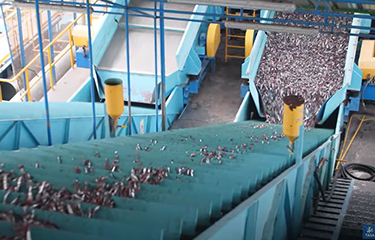Global fishmeal and fish oil production has plunged following Peru’s cancelation of the main anchovy fishing season in the country’s north-central zone in June 2023.
A drop in fishmeal and fish oil production was expected as a result of the cancelation, as Peru’s anchoveta fishery is the largest reduction fishery by volume in the world.
According to IFFO, The Marine Ingredients Organization, which represents companies that account for an estimated 50 percent of the global output of both fishmeal and fish oil, through May 2023, year-over-year production of fishmeal is down 10 percent.
It’s a massive decrease month-over-month. In April 2023, global fishmeal production was up 30 percent year-over-year, and in March 2023, it was up 36 percent.
“The primary factor driving such decline is the production drop of approximately 50 percent reported in Peru, where the first fishing season has not been authorized yet,” IFFO said in its monthly membership update. “At the time of issuing this report there is still no clarity on whether the first fishing season … might be authorized.”
Total cumulative output of fish oil in the first five months of 2023 was down 22 percent, IFFO, reported, with Chile and the U.S. the only countries reporting net production increases. Through the first four months of the year, it was down just 7 percent.
China, another major fishmeal producer and the world’s top fishmeal consumer, is also struggling with supply, IFFO said.
“Following the implementation of the fishing ban on 1 May on all fishing grounds [in China] to allow the biomass to reproduce, domestic fishmeal and fish oil production remains poor and dependent on little frozen fish caught in the last season and byproducts from fish and shrimp processing plants,” IFFO said. “This situation is expected to persist until the fishing ban is lifted in September. Considering the lower-than-average domestic production both in the second part of the year 2022 and in the first half of 2023, China has continued to increase its fishmeal imports.”
More dependence on imported fishmeal means prices have risen, and IFFO warned higher costs are squeezing China’s aquaculture producers.
“This year farmers are facing additional risks of economic losses due to escalating costs of aquafeed and stagnating farm-gate prices. Should this trend continue, farmers could be soon exposed to even greater financial risks,” it said.
China’s swine industry, which is a huge consumer of fishmeal, has also struggled.
“he pig sector continues to face challenges due to weak demand during the hot summertime. Pig prices have been on a decline since last October, which has resulted in a continuous although insufficient reduction of the sow stock. The pig sector remains in fact affected by overcapacity and unprofitable farm-gate prices.”
Photo courtesy of TASA







